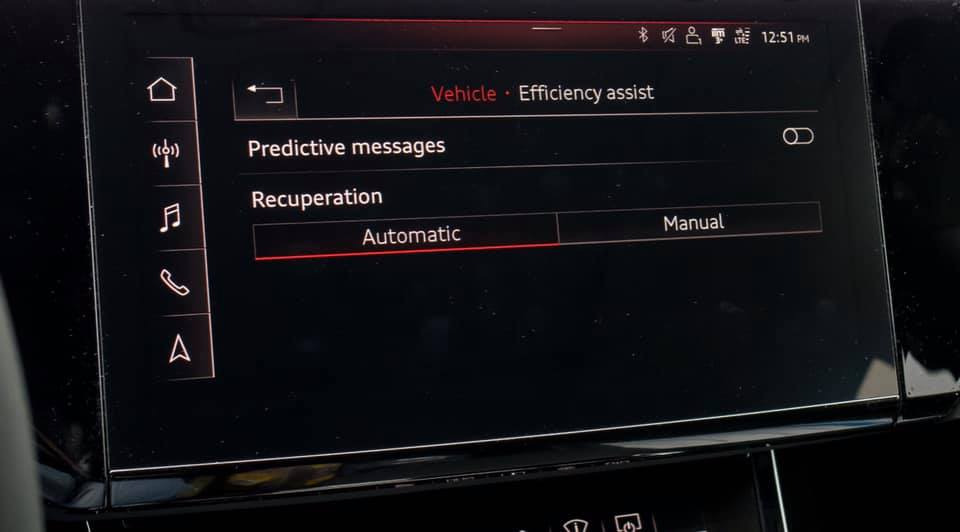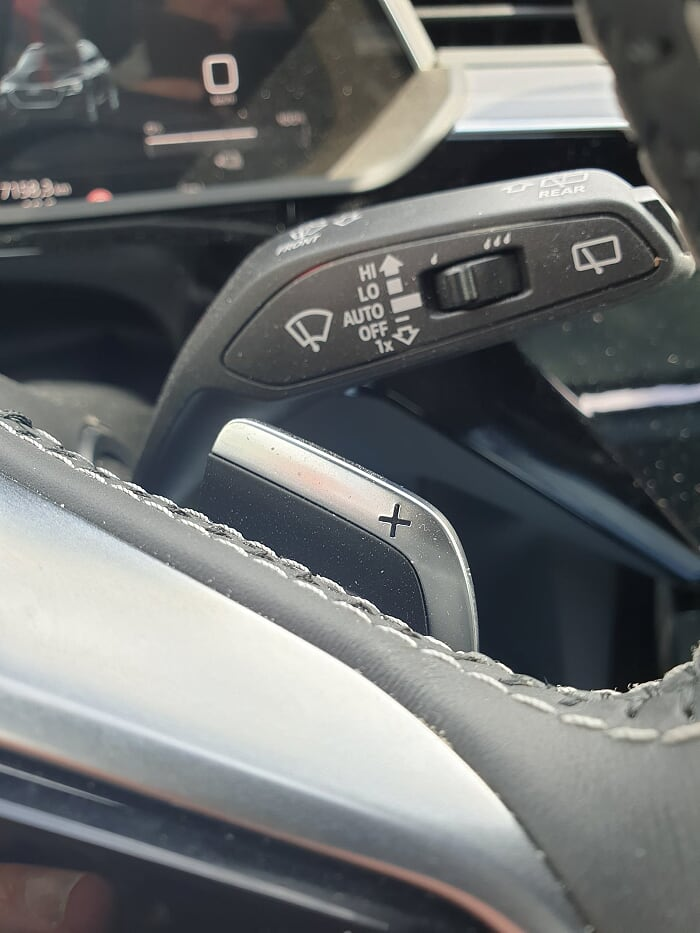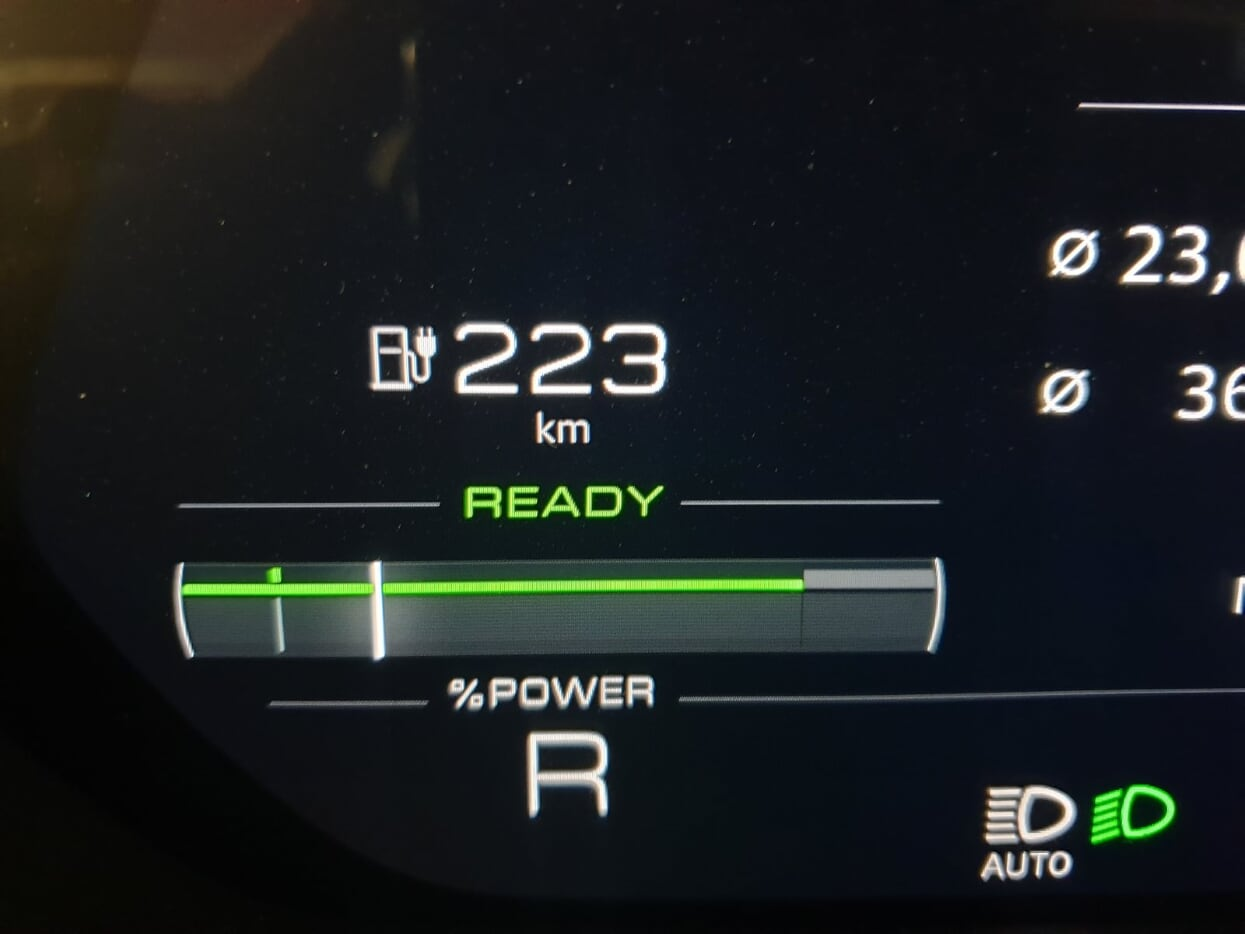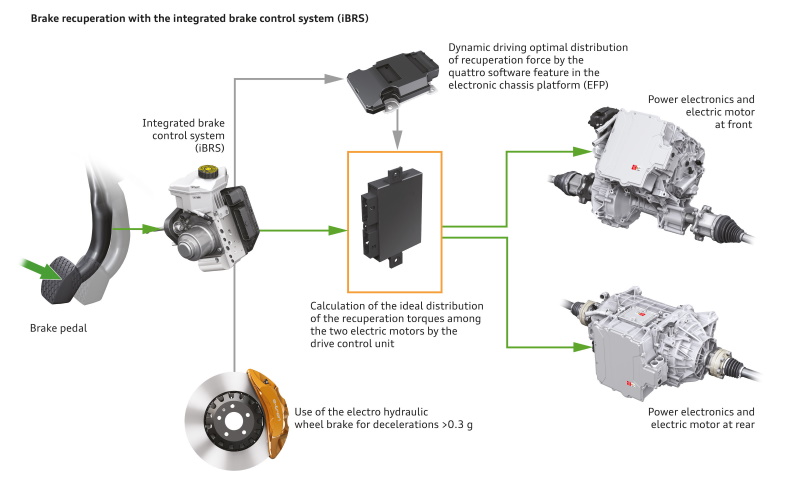Audi e-tron brakes & recuperation
The Audi e-tron is the first electric series-production model that uses an electrohydraulically integrated brake control system.
Regenerative brakes
With its recuperation concept, the Audi e-tron can recover most of the kinetic energy during braking (recuperation– electric motors in generator mode) and significantly increase range, depending on the topography. On the Audi e-tron, there are three ways to recuperate energy:
Automatic recuperation
When recuperation mode is automatic, the car will decide when to recuperate when the driver is not accelerating or using adaptive cruise assist.

Recuperation mode
When the car enters a zone that enforces a lower speed or when it comes up behind a slower car in front, the drive management system attempts to reduce speed by coasting.
If the distance available is too short, it switches to coasting recuperation up to 0.15 g.
The predictive efficiency assist system must be activated in the Audi e-tron for automatic recuperation to cut in.
When braking, the motor at the rear alone performs the deceleration in most everyday driving situations.
Manual recuperation via the paddle levers
On the steering wheel, the Audi e-tron has paddle levers to set recuperation in three different levels manually

The levels are
- Off
- Level 1 approx 0.06G
- Level 2 approx 0.15G

Virtual cockpit shows how the regen is on 0.15G (50%) of max.
Depending on which recuperation mode is enabled, the regen level will be remembered or turned off if the accelerator is pressed.
Setting it to manual and using paddles to set it to Level 1 or Level 2 will enable one-pedal-driving.
Brake pedal recuperation
Depending on the battery’s charge level and the driving situation, a deceleration of approximately 0.3 g can be generated by brake energy recuperation.
On average, over 90 percent of all braking deceleration is below 0.3 g, depending on the driving style and the driving situation. This allows a large amount of the kinetic energy during braking to be returned to the battery via brake energy recuperation.
The transition between brake energy recuperation (electrical deceleration) and deceleration using the hydraulic brake system is seamless and is not felt by the driver.
This is made possible by sophisticated and precise regulation with the new electrohydraulic brake regulation system MK C1.
On e-tron 55 and 50, the recuperation can reach 220kW depending on speed. On e-tron S, it can reach 275kW. The most powerful recuperation on the market.
See also articles on Regenerative braking and one pedal driving.
Physical brakes
As the basis for the brake system, the Audi e-tron uses the brake system from the Audi Q7.
The wheel brakes are actuated hydraulically, the reinforcement is actuated electrically, and the activation is actuated electronically.
The control unit detects how much force the driver is depressing the brake pedal and calculates how much braking torque is needed within milliseconds.
If the recuperation torque is insufficient, hydraulic pressure for the conventional friction brake is generated.
Put into motion by an electric spindle drive, the displacement piston pushes the brake fluid into the brake lines. As a result, the transition from the engine brake to the pure friction brake is smooth, and the driver does not notice it.
A second piston generates the familiar pedal feeling for the driver’s foot utilizing a pressure-resistant element. Thanks to this brake pedal simulator, the driver is not affected by what is happening in the hydraulics.
In the case of ABS braking, pressure buildup and reduction are not noticeable in the form of irritating hard pulsations.

Audi e-tron brake system
The electro-hydraulic brake system is activated when the driver depresses the left-hand pedal so hard that the deceleration exceeds 0.3 g.
Otherwise, the Audi e-tron decelerates through recuperation via the two electric motors. The brake control system builds up brake pressure for the wheel brakes with great precision and is roughly twice as fast as a conventional brake system.
When automated emergency braking is performed, there are only 150 milliseconds between the initiation of the brake application and the presence of maximum brake pressure between the pads and disks.
This is barely more than a blink of an eye and creates impressively short braking distances. Furthermore, even at a very slow speed, such as during maneuvering, the car decelerates via the wheel brakes because this is more efficient than electric braking.
Otherwise, the electric motor would have to use valuable battery current to decelerate actively at low rotational speeds.
The “brake-by-wire” technology of the electrohydraulically integrated brake control system enables a larger air gap, i.e. a greater distance between the brake pad and brake disk, to be set.
This gap minimizes possible friction and heat generation and contributes actively to the vehicle’s long-range.
Disabling to prevent rust
The Audi e-tron has a built-in system to reduce rust on the brake discs. The Audi e-tron will try cleaning the brake disc for rust. The braking system typically disconnects regen for the first braking of the day.
Videos
The video below shows how the system works.
How it work going downhill
Audi all-electric models
Click on link for direct access to the different model info for Audi all-electric models